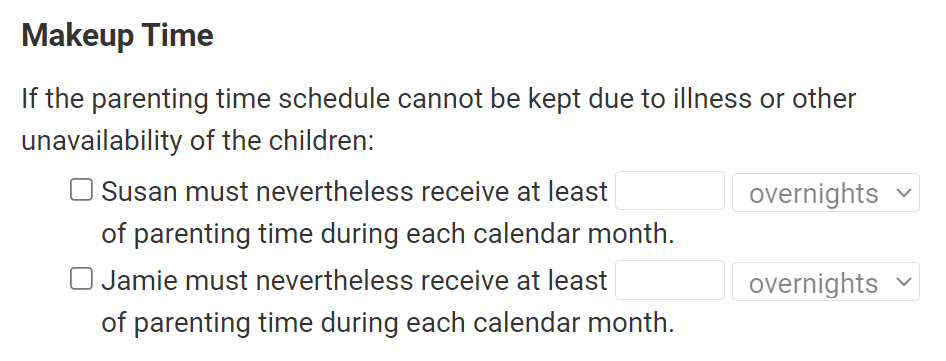Custody Versus Visitation: Differences, Rights and More
People often think of custody and visitation as one in the same, but they are two different legal rights you can have regarding a child.
On this page
Difference between custody and visitation
Custody is the right and responsibility to care for a child (in the case of physical custody) or make decisions for a child (in the case of legal custody). Usually, when a parent has physical custody, they also have legal custody.
Visitation is the right to have contact with a child you don't have custody of. You can exercise visitation through in-person visits and other forms of contact, like phone calls.
If one parent has sole physical custody, the other typically has visitation unless they pose a serious threat to the child. If parents have joint physical custody, neither has visitation.
Nonparents like aunts and uncles can also have custody and visitation, though it's much less common.
Custody versus visitation rights
Custody gives you expanded rights to a child compared to visitation.
If you have physical custody (joint or sole), your rights include:
- Providing a home for the child
- Spending time with the child (How much depends on what the court orders.)
- Making day-to-day decisions while you're with the child
Sometimes with joint physical custody, one parent is named the resident parent or primary parent, and their address is the child's official address.
If you have legal custody, your rights include:
- Making major decisions for the child
In joint legal custody, parents are supposed to reach decisions together. Occasionally one parent is named the final decision-maker, perhaps just for certain types of decisions.
If you have visitation, your rights include:
- Spending time with the child (How much depends on what the court orders.)
- Making day-to-day decisions while you're with the child
Sometimes visitation has limits placed on it, like a requirement that visits be supervised by an adult or take place during the day.
Your custody or visitation rights will be explained in detail in your court order. For instance, the order might say how far you're allowed to move with your child and which of you can attend the child's extracurricular activities. If you agree on these sorts of details, you can write a parenting plan with your co-parent and ask the court to approve it.
Typically, the parent with less parenting time pays child support, regardless of whether they have custody or visitation.
Even if you don't have custody or visitation, you have some basic rights as a parent, like the right to see your child's records. These parental rights vary by jurisdiction.
Amount of parenting time for custody versus visitation
In some places, physical custody implies a certain minimum amount of parenting time, like 30 percent of the child's time. But in many places, the division between custody and visitation is more fluid, and custody is defined as both parents having "significant" time with the child.
Whether you have physical custody or visitation, your court order will probably lay out a parenting schedule for you to follow. Parents are generally free to agree on adjustments to the schedule. If they disagree frequently and there have been changes in the family's situation, either parent can ask the court for a new schedule.
When you create a parenting plan, you can write in a guaranteed minimum amount of time for each parent.

You can customize this to fit your situation with Custody X Change.
The easiest way to make a custody and visitation schedule
Creating a custody and visitation schedule to suggest to the other parent or the court can feel daunting. How do you write something that meets legal requirements and doesn't leave any loose ends?
The Custody X Change online app makes it easy. Either customize a schedule template, or click and drag in your custody and visitation calendar to make a schedule from scratch.

You can customize this to fit your situation with Custody X Change.
Then watch a full description appear in your parenting plan.

You can customize this to fit your situation with Custody X Change.
The combination of a visual and written schedule means your family will have no problem knowing who has the child when. Take advantage of Custody X Change to make your schedule as clear and thorough as can be.
